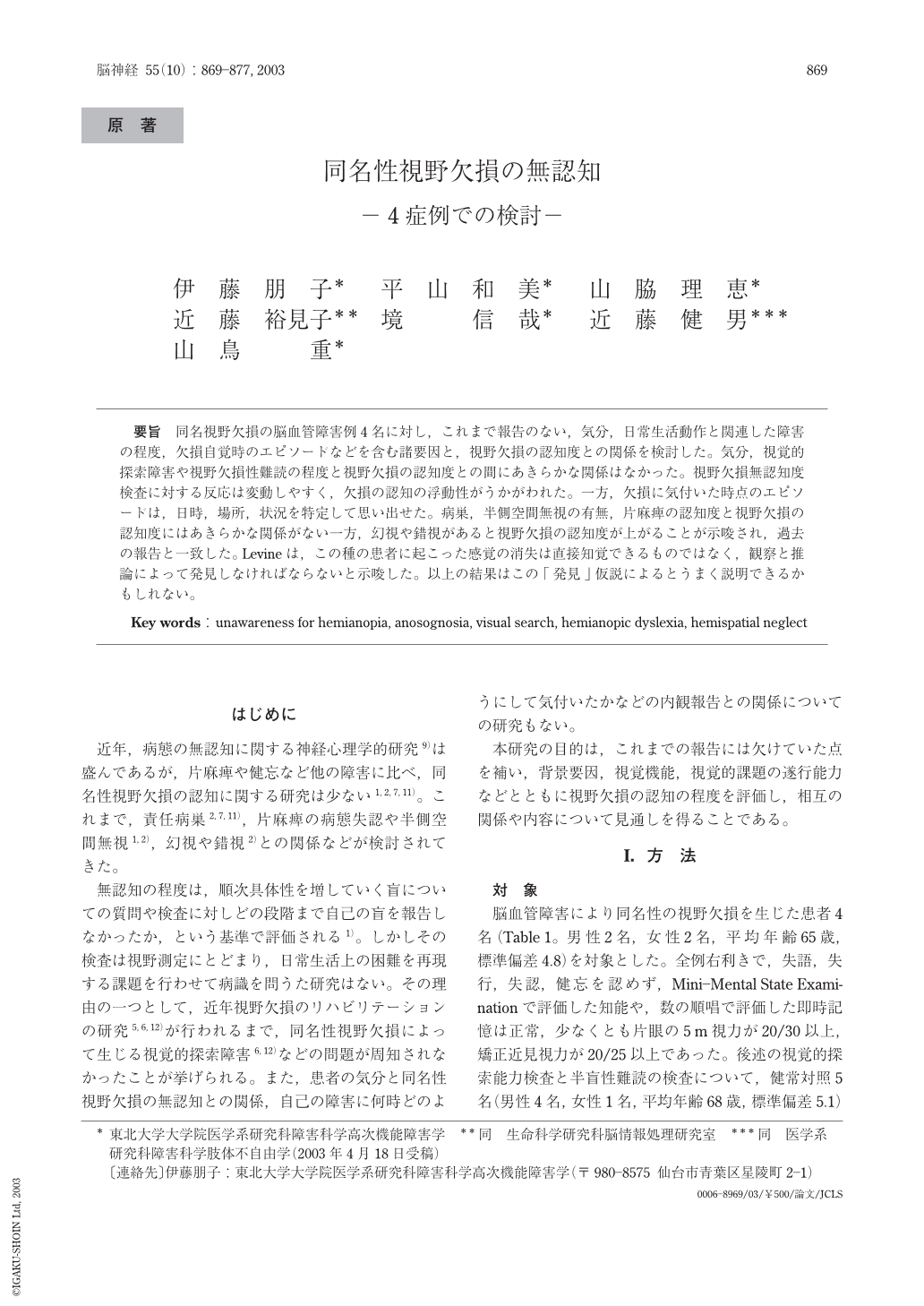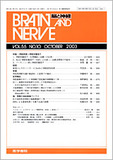Japanese
English
- 有料閲覧
- Abstract 文献概要
- 1ページ目 Look Inside
要旨 同名視野欠損の脳血管障害例4名に対し,これまで報告のない,気分,日常生活動作と関連した障害の程度,欠損自覚時のエピソードなどを含む諸要因と,視野欠損の認知度との関係を検討した。気分,視覚的探索障害や視野欠損性難読の程度と視野欠損の認知度との間にあきらかな関係はなかった。視野欠損無認知度検査に対する反応は変動しやすく,欠損の認知の浮動性がうかがわれた。一方,欠損に気付いた時点のエピソードは,日時,場所,状況を特定して思い出せた。病巣,半側空間無視の有無,片麻痺の認知度と視野欠損の認知度にはあきらかな関係がない一方,幻視や錯視があると視野欠損の認知度が上がることが示唆され,過去の報告と一致した。 Levineは,この種の患者に起こった感覚の消失は直接知覚できるものではなく,観察と推論によって発見しなければならないと示唆した。以上の結果はこの「発見」仮説によるとうまく説明できるかもしれない。
Background : There was no report which dealt with the relationship between emotional state, degree of defective visual search, severity of hemianopic dyslexia, the episode when the patient became aware of the defect, and unawareness of visual loss in homonymous hemifield.
Objective : To investigate the relationship between degree of awareness and those factors that might be responsible for the unawareness, including the aspects listed above.
Methods : Four patients with visual field defects caused by a brain lesion after a stroke was investigated. Self rating of emotional state, search performance for an object among many placed on a table, and for text reading, as well as visual field, visual positive phenomena, and hemispatial neglect were evaluated. Degree of unawareness for field loss was evaluated by modified version of the method of Bisiach et al.(1985). In addition, the episodes when the patient became aware of the defect were asked.
Result : In accordance with the previous studies, we found no relationship between the degree of awareness of field defect and anatomic lesions, co-existence of hemispatial neglect, or the degree of awareness of hemiplegia. However, the patient with neglect was unaware of their troubles in vision at all, whereas the patients without neglect were aware of the troubles but misinterpreted them as problems of the eyes including acuity. In accordance with previous studies, co-existence of visual hallucinations or illusions seemed to be associated with awareness of visual field defect.
No relationship was found between the degree of awareness of field defect and emotional state, degree of field loss, degree of defective visual search, or severity of hemianopic dyslexia.
Their responses to the inquiry about the degree of awareness of field defect were not consistent. Thus, the awareness of the field defect seemed to be difficult to be kept firmly in their mind. On the other hand, the patients could remember the episode when they became aware of the defect for the first time, being able to specify time, place, and situation.
Conclusion : Levine(1990) suggested that the sensory loss in this sort of patients was never phenomenally immediate but instead must be discovered by observation and inference. Non-specificity of the lesion, qualitative difference in awareness between the patient with and without hemispatial neglect, association of positive visual phenomena and awareness, fluctuation of awareness, and dependence of awareness on personal experiences found in our patients, can be explained with this ‘discovery' hypothesis.

Copyright © 2003, Igaku-Shoin Ltd. All rights reserved.


